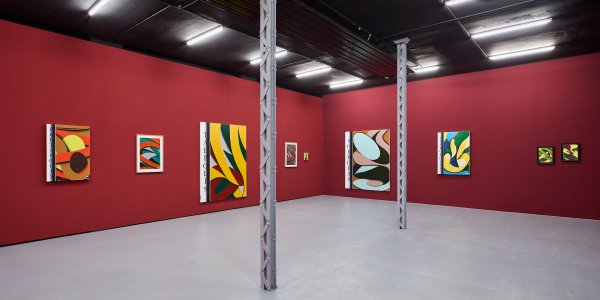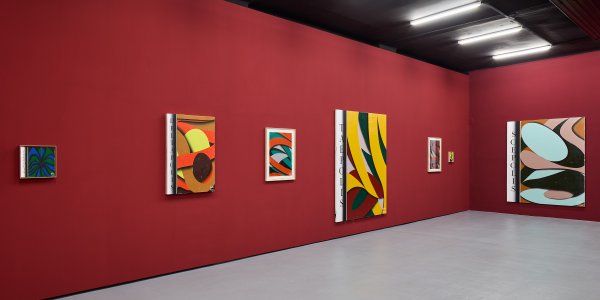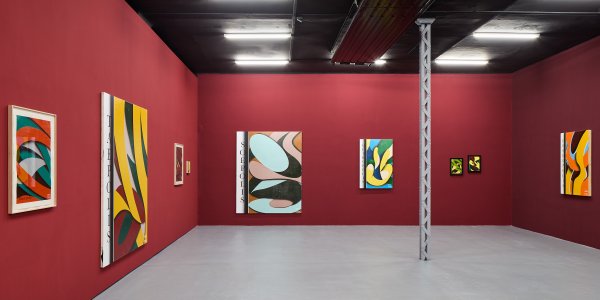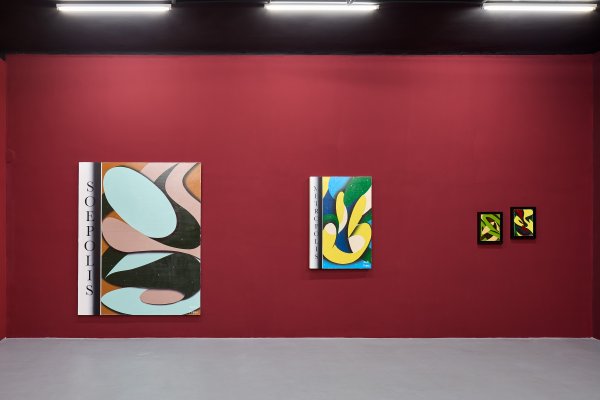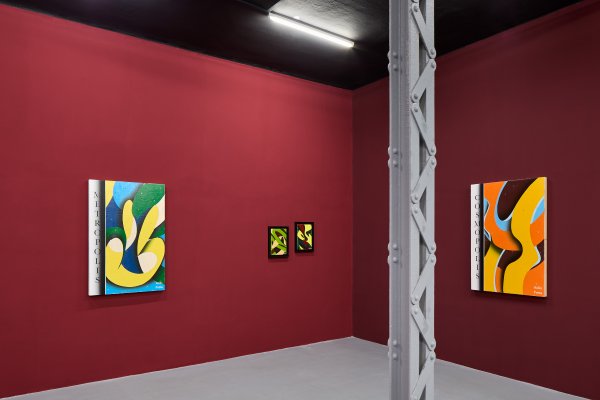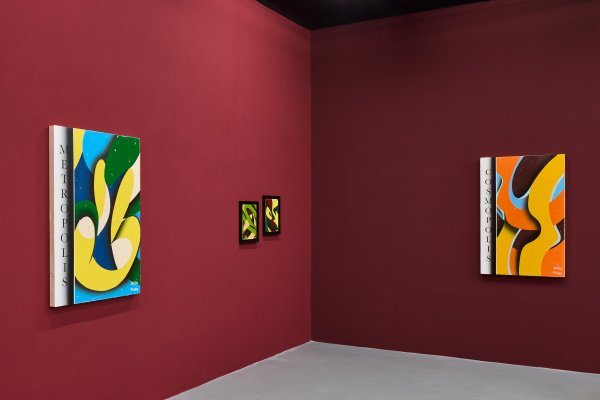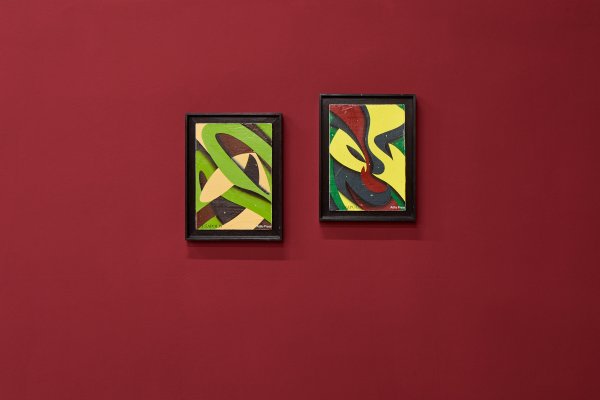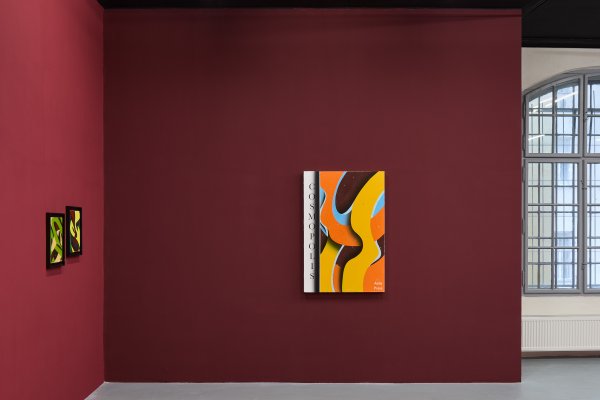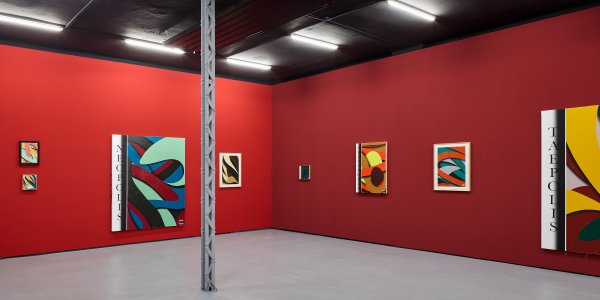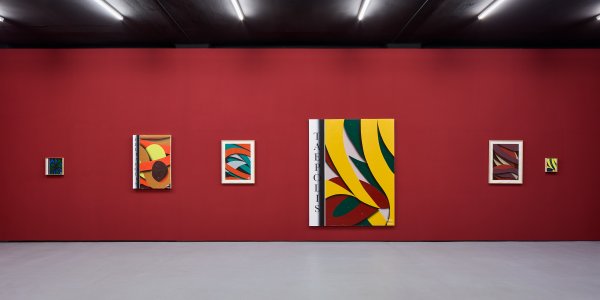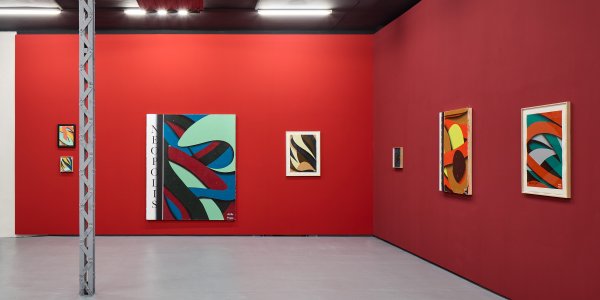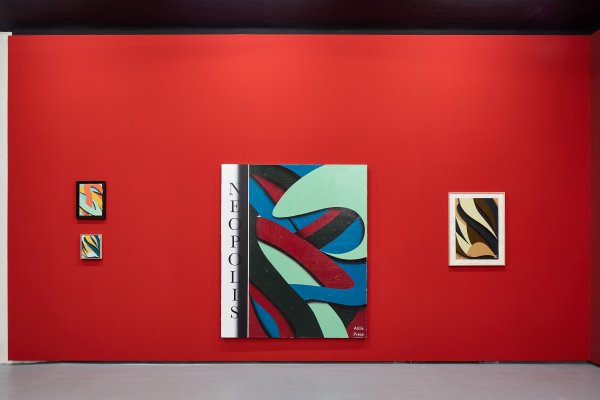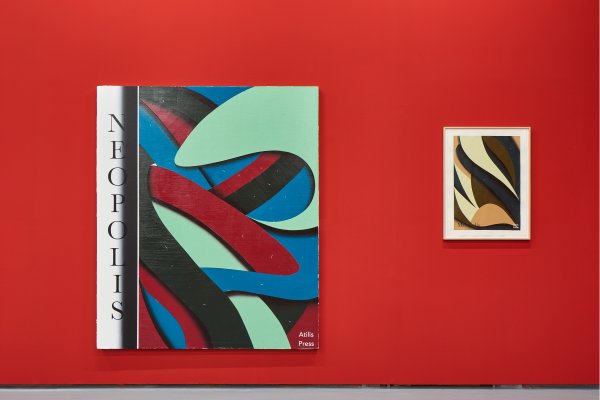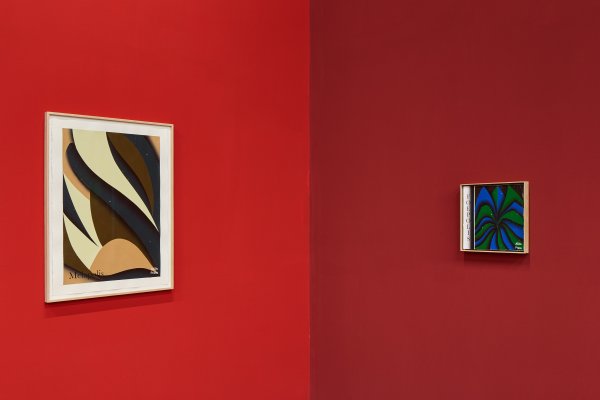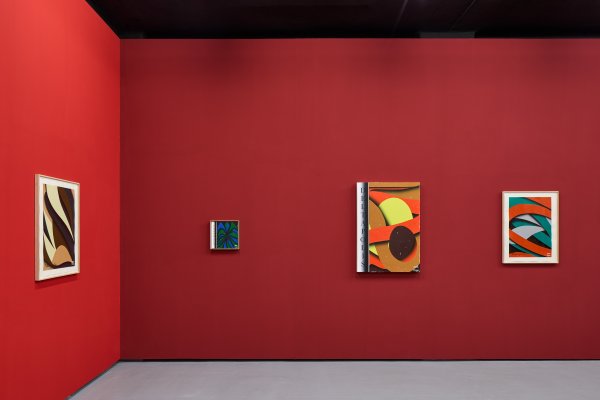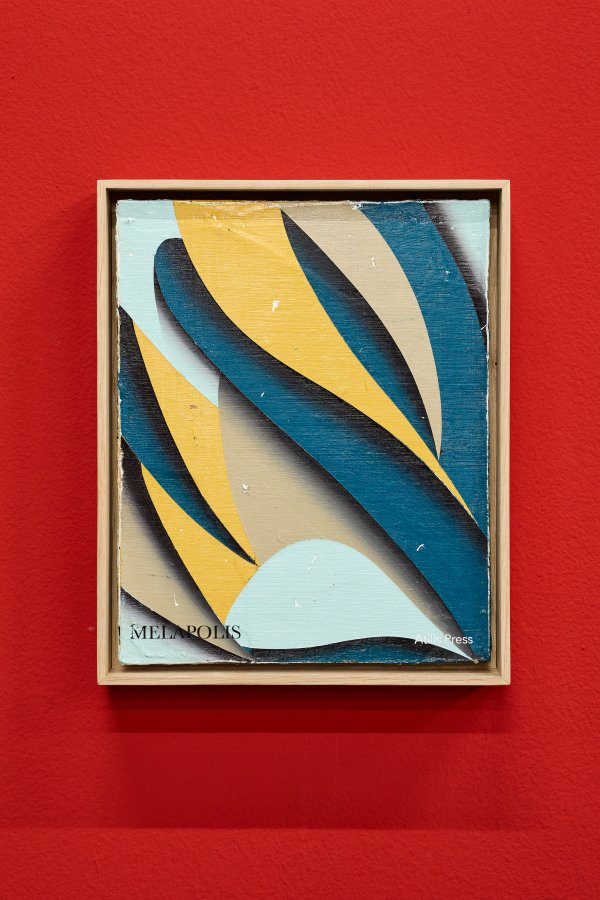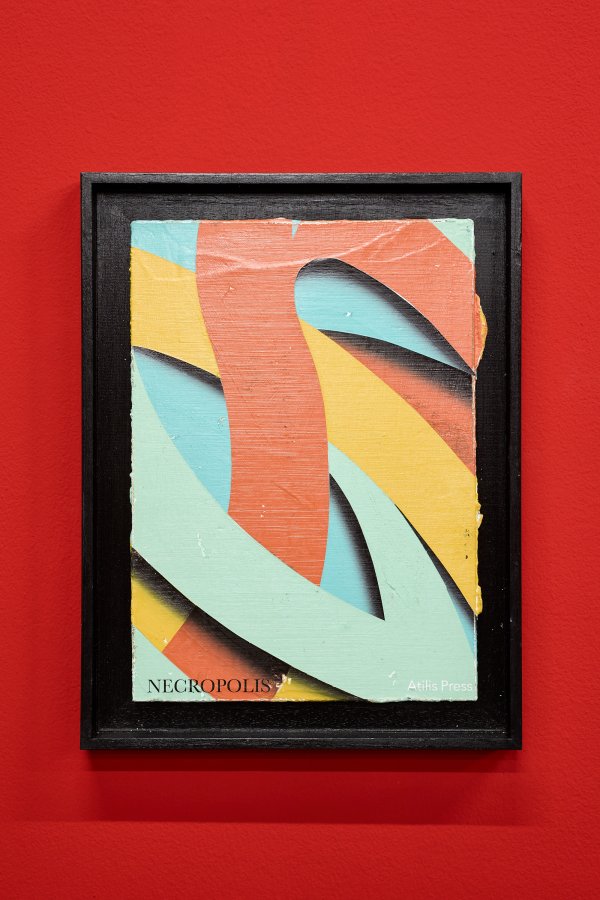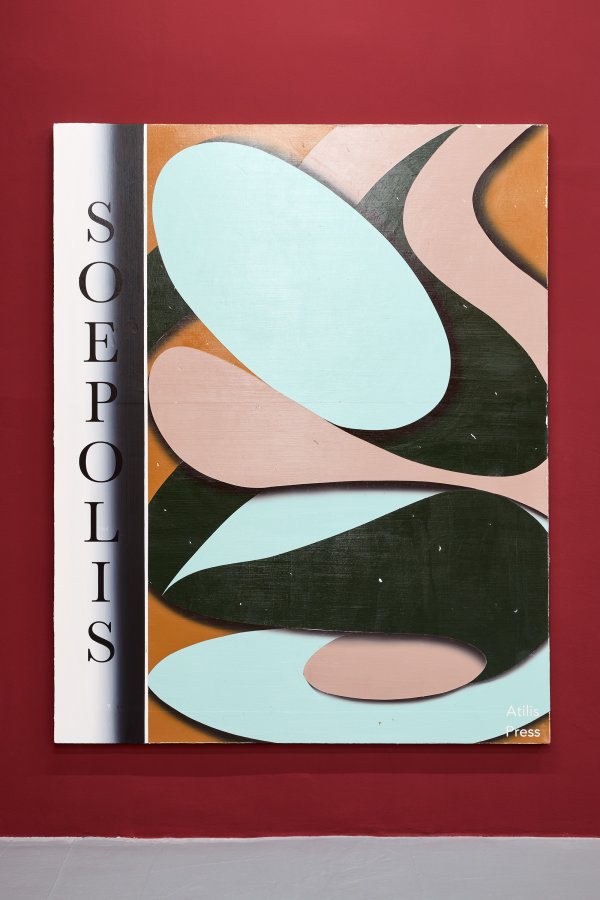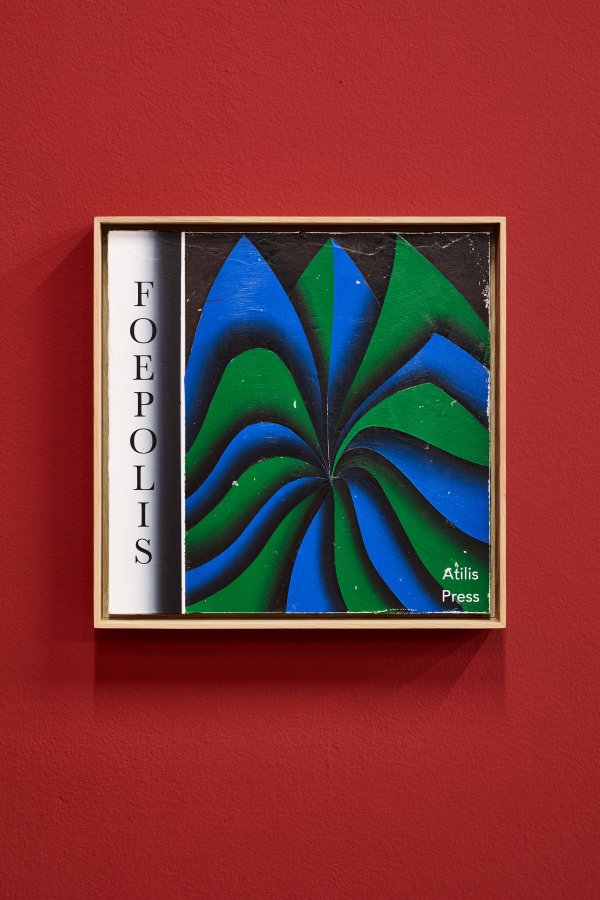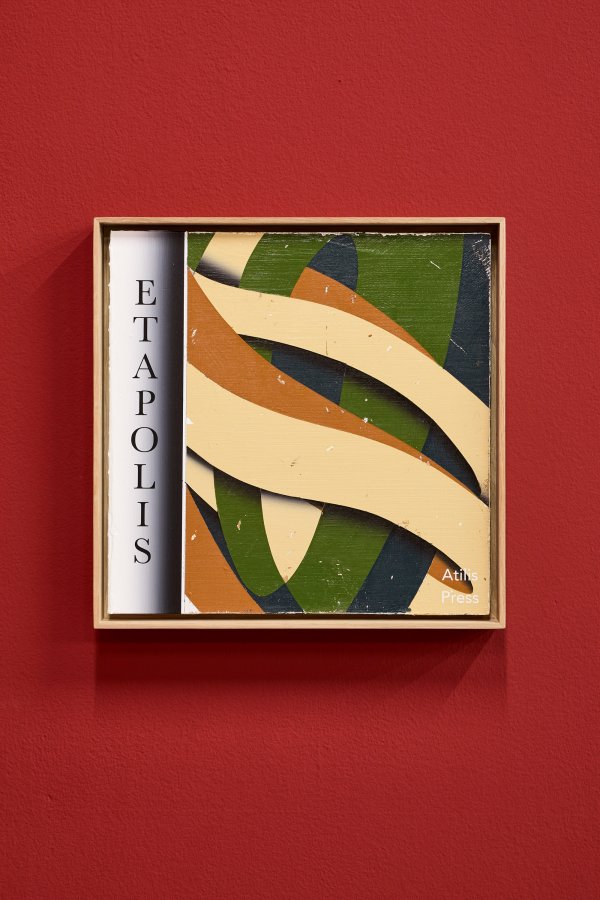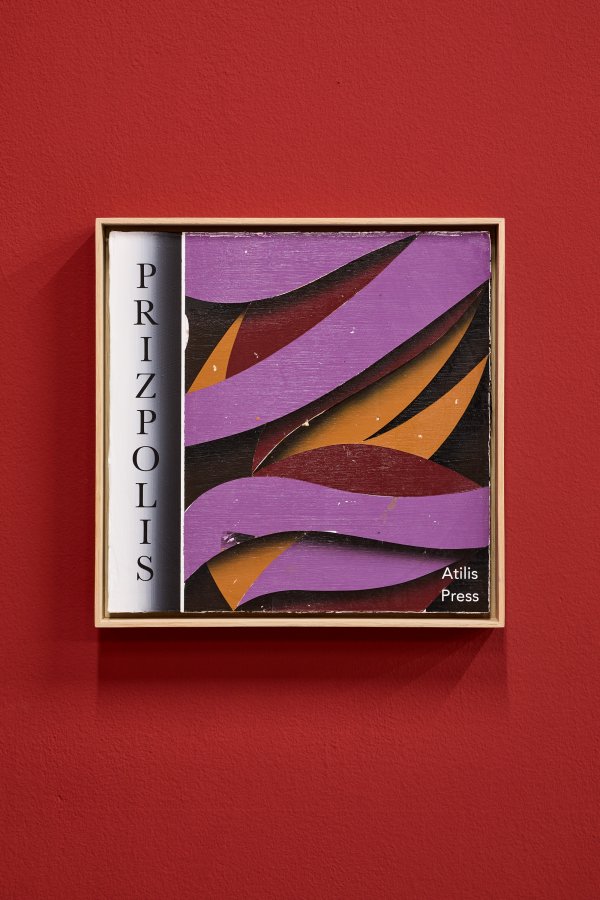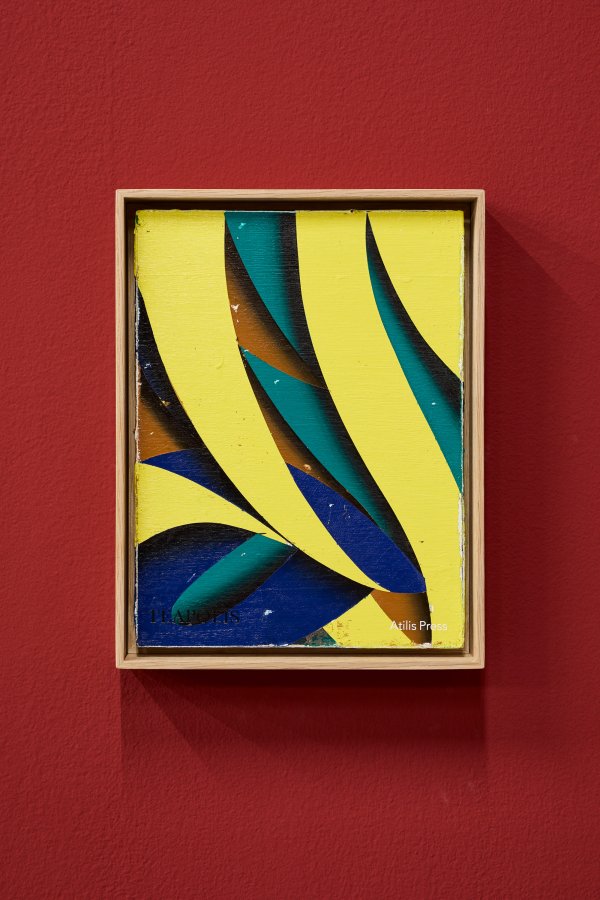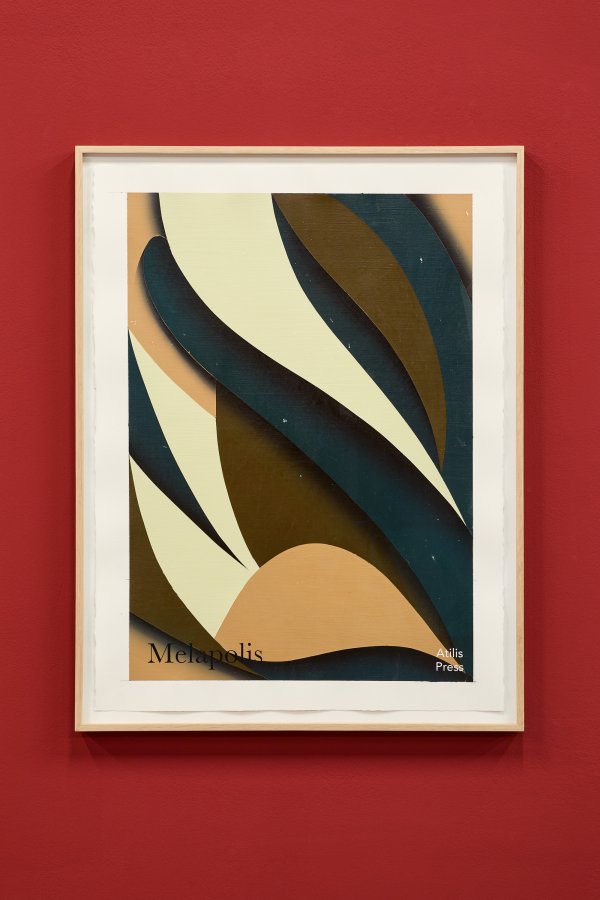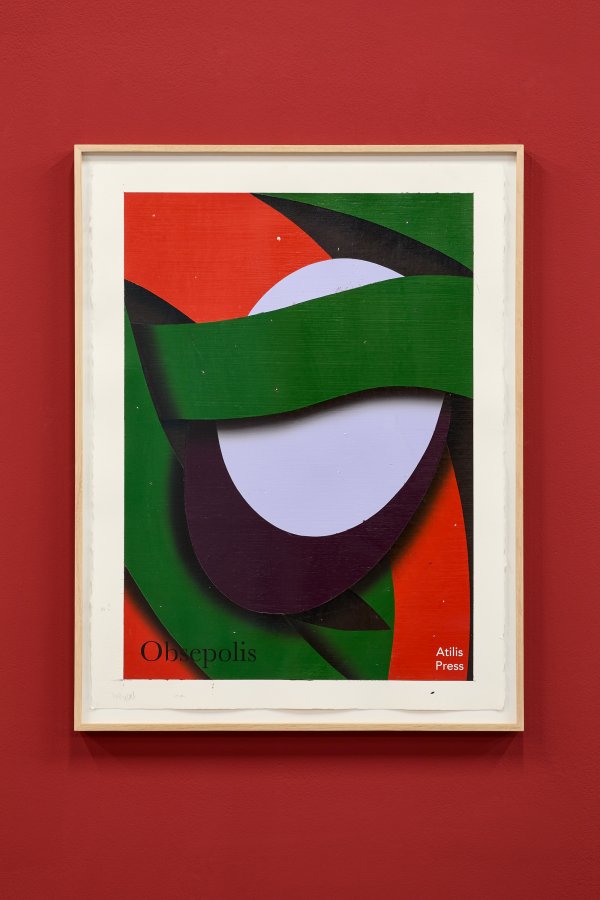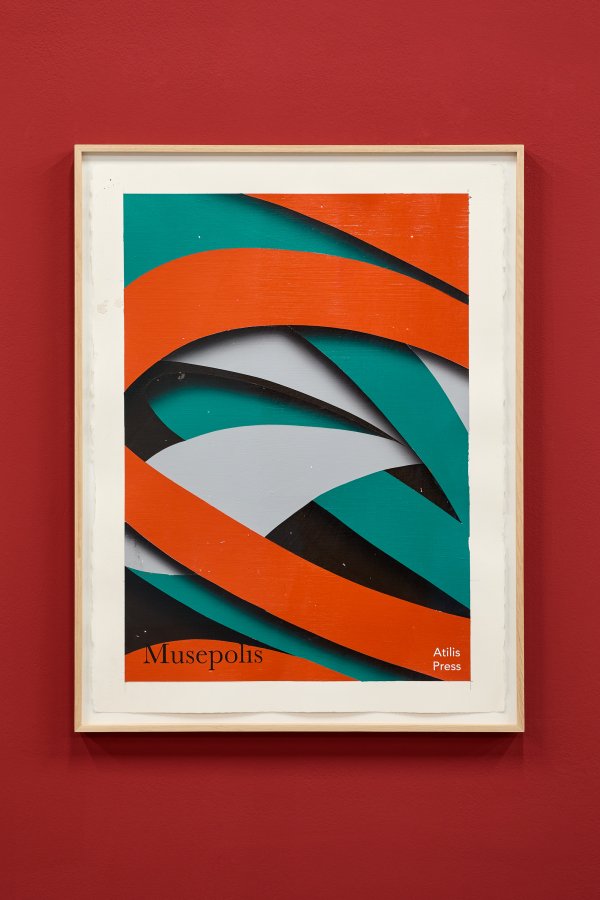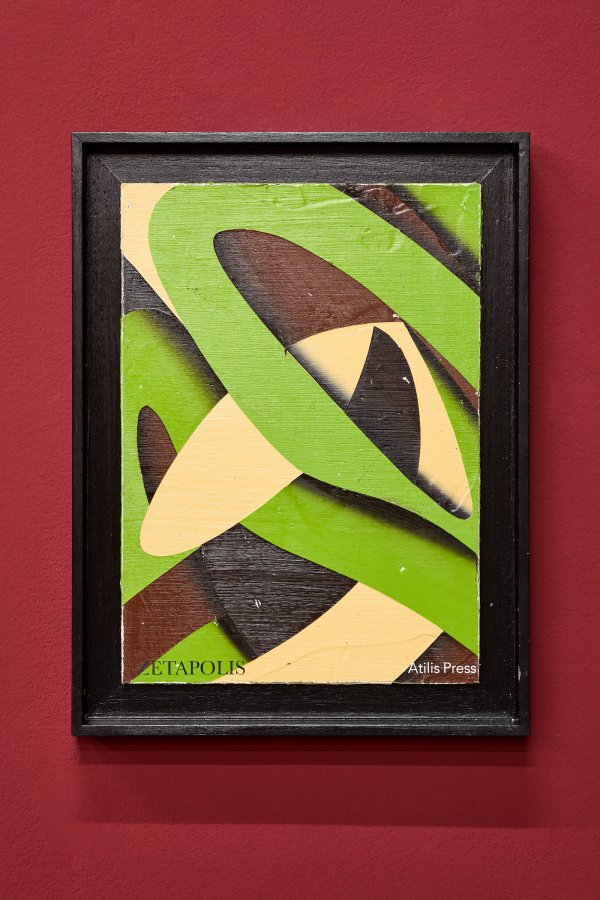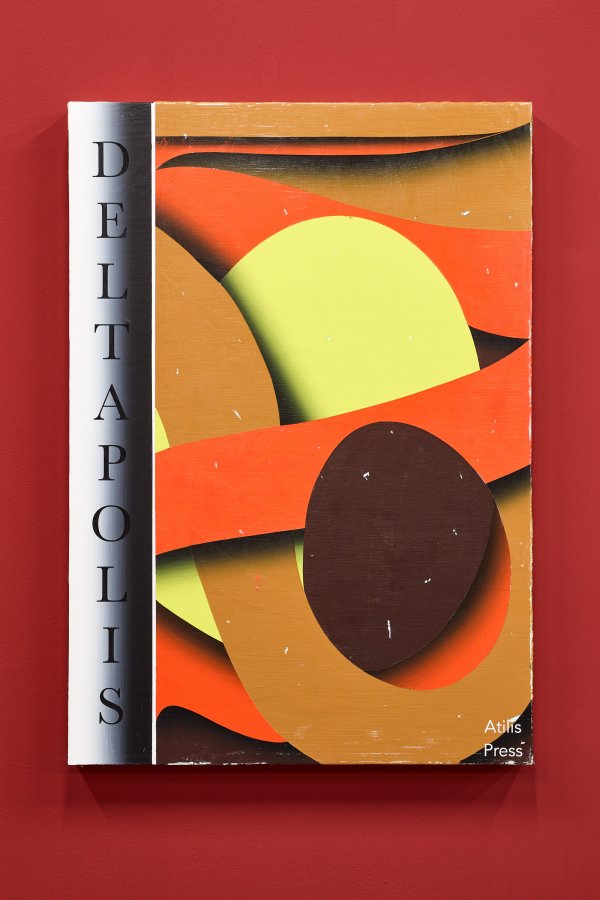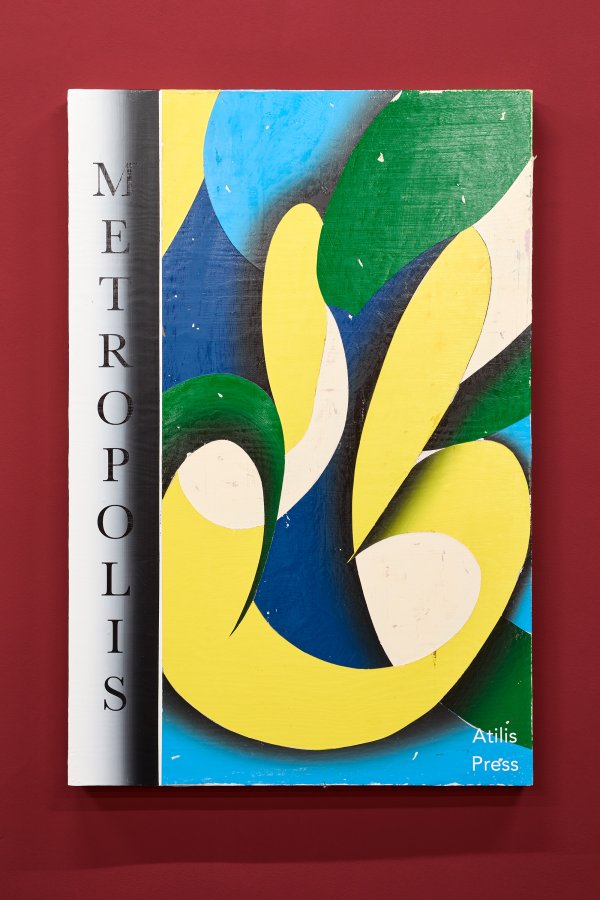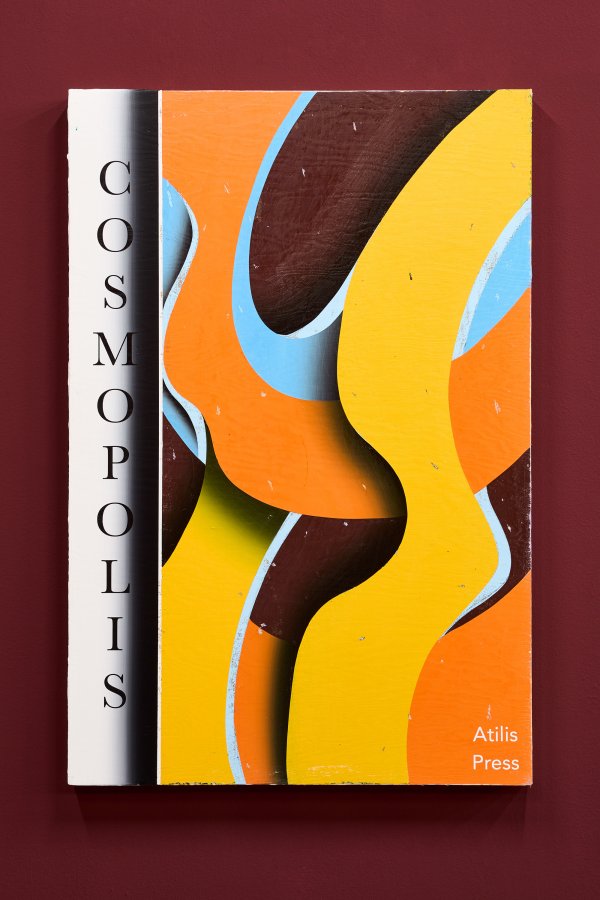Vladimír Houdek
P O L I S
17.2.2022–14.5.2022 Prague Curated by Filip Šenk- text by Filip Šenk (EN)
- text by Filip Šenk (CZ)
Vladimír Houdek: The Painting and the City and the Book
In a polyphony of activity, the City is swelling, overgrowing, shackling and unleashing itself. The enchanting image of the City (indeterminate image of indeterminate city) constitutes a major part of the image of the contemporary world. However, it is not composed of projections of data – sociological, economic or geographic. The image of the perceived city places before the viewer something else that simply cannot be quantified. The paintings presented by Vladimír Houdek at this exhibition come close, because they latch onto the city’s inner emotion: an image of constant activity that is elusive yet remains proximate.
In many of its current variations the City arouses diverse forms of relations, from anachronism to life’s ideal. Without exaggerating, cities may be described as distinctive elements of key structures of the contemporary perception of the world: the City viewed as an instrument for increasing both the positive and negative aspects of life. In his book Scale (2017), Geoffrey West, a theoretical physicist who turned his research focus to questions regarding the nature of life, also writes about the lives of cities. He notices the evident: our time is the time of cities, after all for the first time in humanity’s recorded history, the majority of the world population lives is cities (in 2006 it was about half). In place of the concept of the Anthropocene, West thus proposes the term Urbanocene for our epoch. The City is not a neutral background device, it is not simply the given nature of the framework, because it is in fact an instrument for the generation of innovation, wealth and power, as much as it is linked to crime, poverty, disease and high energy and resource consumption.
Even though Geoffrey West and his team have been able to come up with laws for the scaling and growth of cities, perceived experience cannot be domesticated so simply. That is one of the reasons why the City remains ambiguous in terms of the way it is experienced, becoming an object of fascination: not, however, an object that we can simply place before us in its totality. The City is a place of encounters, exchanges and sharing, as much it is as a place of gaps, interruptions and concealment.
Does the City, then, have a form that can be depicted? Factual representations of cities, whether in the form of maps, photographs or data visualisations, are always somehow reductive, regardless of the scale at which we are observing the City. This opens up a field for coming to terms with the reality of the City’s everydayness. In his most recent artworks, Vladimír Houdek has been creating an image of the City that is literally palpable – or thumbable – since it is embedded in the format of a book cover. The work is a continuation of the artist’s previous series of paintings-books that led him to set up his own fictional publishing house, Atilis Press, for which he has been designing book covers. The starting point for all the titles of the current series of paintings-books is the Greek word polis; while some of the titles such as Metropolis or Necropolis hold a familiar place in the vocabulary of the contemporary world, others like Obsepolis or Xanopolis designate forms that have not yet arisen, even though the books-paintings may bear marks of having been read. We do not know the contents of the books, and never will. The paintings of the cities on the covers are quivering moments that show us fragments of possible worlds. The paintings are similar to each other in that they always represent a city, but while they sometimes approach a state of happiness, at others it is one of catastrophe.
The interblending of real and fictional worlds creates the series’ decisive quality. Here, the actual lived experience of the dynamics of the City encounters the will to give it persistent form without imposing invariability upon it. It is thus worth noticing that for Vladimír Houdek’s this task is accompanied by variable compositional schemes and an unusually colourful palette. The majority of the previous series, including the first set of paintings-books for Attila Press, consisted of works with a clearly defined centre generally balanced out by an accent in the form of extension beyond the margins. With the current series, we observe flurries of movements, lines and colours that do not extend beyond the dimensions of the base in actual fact, but rather with the aid of projection into ideal space (the mind): we thus behold fragments of the complex activities of urban culture. While in previous works the overlapping edges of layers of paint could be seen as physical instruments for disrupting the neatness of format, now the extensions beyond the painting’s insufficient surface are an expression of the uncontrollable activity they depict. Even so, it is still activity that is in some way already domesticated, having been made part of a book. A city arranged to be handheld.
There are no references to concrete cities or settlements in these paintings. They are not an attempt to imitate the world since they create their own, self-sufficient reality as paintings. This pictorial reality is penetrated and interwoven with the experienced world through insights from geometry, art history and literature. Here, the painting-book is simultaneously an image of an indeterminate city as well as a connection to a hidden narrative. The experience of the City is impressed upon the structure of these paintings, without it being possible to identify them with Prague or any other specific city (or, put the other way around: they could be paintings of Prague, but also of any other city). Because we are not supplied with narratives about cities contained between the covers of the books, we cannot rely on words and statements to elucidate and perhaps even vindicate the vision of the City on the front cover. We are observing neither the forms of images of the City created from the external viewpoint of a scientist, nor the internal perspective of the writer. Detached and immersed at the same time, the paintings can easily do without a connection to any city in particular, and still remain dependent on a shared experience of the City.
Filip Šenk
Vladimír Houdek: Obraz a město a kniha
Město se vzdouvá, samo sebe překrývá, spoutává a rozpoutává v polyfonii dění. Uhrančivý obraz města (neurčitý obraz neurčitého města) se podstatnou měrou podílí na obraze současného světa. Tento obraz se však nesestává z projekcí sociologických, ekonomických nebo geografických dat. Obraz vnímaného města před diváka klade cosi odlišného, co nelze prostě kvantifikovat. Obrazy, které předkládá na této výstavě Vladimír Houdek, se tomu přibližují, protože se upínají na vnitřní pocit města: obraz ustavičného dění, které uniká, a přesto je stále blízké.
Město budí v mnoha aktuálních variacích různé podoby vztahů od přežitku po ideál života. Bez přehánění lze města popisovat jako svébytné prvky klíčových struktur současného vnímání světa: město jako nástroj zvyšování jak kladných, tak záporných stránek života. Teoretický fyzik Geoffrey West, který obrátil svou badatelskou pozornost k otázkám života, píše v knize Scale (2017) i o životech měst. Všímá si toho, co je zřejmé: naše doba je dobou měst, vždyť většina světové populace žije ve městech poprvé v zaznamenané historii lidstva (v roce 2006 to byla asi polovina lidstva). Proto West navrhuje namísto pojmu antropocén pro naši dobu označení urbanocén. Město není neutrální nástroj pozadí, není to prostá danost rámce, je totiž nástrojem vytváření inovací, bohatství i moci, stejně jako je spojeno se zločinem, chudobou, nemocemi a vysokou spotřebou energií a zdrojů.
Přestože Geoffrey West se svým týmem dokázal přijít se zákony škálování a zákony růstu měst, vnímaná zkušenost se tak jednoduše domestikovat nedá. I proto zůstává město ve zkušenosti nejednoznačné a stává se předmětem fascinace: nikoli však předmětem, který před sebe můžeme jednoduše klást v jeho úplnosti. Město je totiž místem setkávání, výměny a sdílení, stejně jako místo mezer, přerušení a skrývání.
Má tedy město nějakou formu, kterou by šlo zachytit? Faktická zachycení měst ať už ve formě map, fotografií či datových vizualizací jsou vždy nějak reduktivní bez ohledu na to s jakým měřítkem se na město díváme. Otevírá se tak pole, jak se se zkušeností každodennosti města vyrovnávat. Malíř Vladimír Houdek ve svých posledních dílech vytváří obraz města, který je blízký, doslova ohmataný, protože je vsazen do formátu knižní obálky. Malíř tak navazuje na předchozí sérii obrazů-knih, jež vedla k založení vlastního fiktivního nakladatelství Atilis Press, pro něž navrhuje obálky. Všechny tituly současné série maleb-knih vychází z řeckého slova polis a některé tvary jako Metropolis nebo Necropolis jsou velmi dobře usazené v slovníku současného světa, ale další jako Obsepolis nebo Xanopolis tvarují něco, co nenastalo, jakkoli obrazy-knihy vykazují znaky čtenosti. Obsah knih neznáme a nikdy znát nebudeme. Obrazy měst na obalech jsou chvějivé momenty, které ukazují fragmenty možných světů. Obrazy jsou si podobné, vždy představují město, avšak někdy se blíží štěstí, jindy katastrofě.
Prolínání skutečného a fiktivního světa tvoří v této sérii rozhodující kvalitu. V těchto obrazech se tak střetává vlastní žitá zkušenost dynamiky města s vůlí dát jí tvar, který přetrvá, aniž by sugeroval neměnnost. Stojí proto za povšimnutí skutečnost, že tento úkol je doprovázen v díle Vladimíra Houdka proměnou kompozičních schémat i nezvykle pestrou barevností. Většina předchozích cyklů, včetně první série obrazů-knih pro Atilis Press, byla postavena na dílech s jasně definovaným centrem obrazu, které zpravidla bylo vyvažováno akcentem přesahujícího okraje. Na aktuální sérii sledujeme poryvy pohybů, linií a barev přesahující rozměr podložky nikoli fakticky, ale pomocí projekce do ideálního prostoru (mysli): sledujeme tedy fragmenty složitého dění urbánní kultury. Zatímco v minulých dílech se převislé okraje vrstev malby daly fyzicky pozorovat jako nástroje narušení uhlazenosti formátu, nyní je překračování nedostatečnosti plochy výrazem neovladatelného dění, jež ztvárňují. Přesto je to však dění už nějak domestikované, protože je vpraveno do knihy. Je to město uspořádané do ruky.
V obrazech nenacházíme odkaz ke konkrétním městům či sídlům. Nesnaží se být nápodobou světa, protože utváří vlastní soběstačnou skutečnost obrazu. Do této obrazové skutečnosti se dostávají odkazy a prolnutí s prožívaným světem skrze poznatky geometrie, dějin umění nebo literatury. Obraz-kniha je tu současně jak obrazem neurčitého města, tak spojením s narací, která nám zůstává skrytá. Zkušenost města se propisuje do struktury těchto obrazů, aniž by se daly obrazy ztotožnit s Prahou nebo jakýmkoli jiným městem (případně naopak: může být i Prahou, stejně jako jakýmkoli jiným městem). Protože narace o městech v knihách nám nejsou přístupné, nemůžeme se spolehnout na slova a výroky, které by je osvětlily a možná i vidění města na obálce ospravedlnily. Nesledujeme formy obrazu města utvořené vnějším pohledem vědce, ani vnitřním pohledem spisovatele. Malby, které sledujeme se odtahují od konkrétního města i se do něj noří, a tak se bez vazby s konkrétním městem snadno obejdou, a přitom jsou závislé na sdílené zkušenosti města.
Filip Šenk
